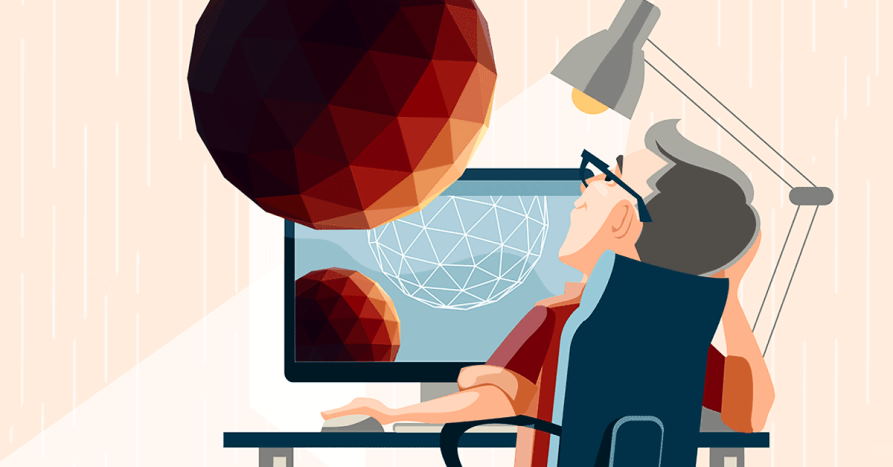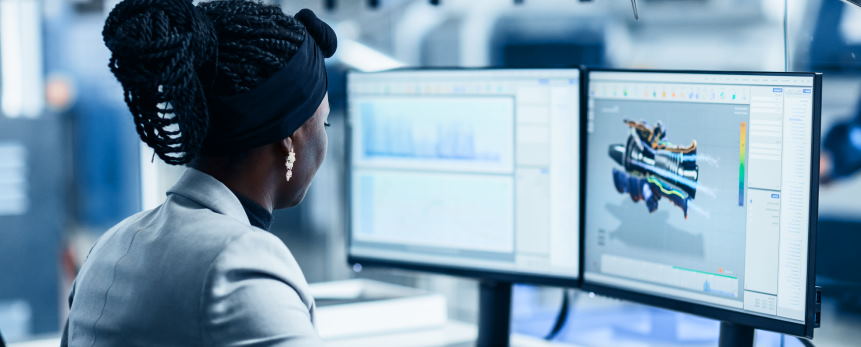To create 3D models, you have four main choices: polygonal modeling, NURBS modeling, subdivision surfaces modeling and sculpting. In this article, we will explore each of these options in depth. Polygonal modeling is the most popular technique for creating 3D models and is often used for video games and movies. NURBS modeling creates smooth curves and is mostly used for engineering or industrial design. Subdivision surfaces are a newer technique that combines the best of both polygonal and NURBS modeling. Finally, sculpting is used when you need to create a highly detailed model with organic shapes. So which type of 3D modeling is right for you? Let’s find out!

Different types of 3D modeling techniques
There are a variety of different ways that you can create 3D models. Some of the most popular methods include:
- 3D Scanning: This is a process where a real-world object is scanned and converted into a digital 3D model. This can be done using specialized hardware, such as a laser scanner, or photogrammetry (taking photos of an object from multiple angles and reconstructing it in 3D software).
- 3D Printing: This is a process where a digital 3D model is turned into a physical object using a 3D printer.
- Manual Modeling: This is the traditional way of creating 3D models, where an artist creates an entire model from scratch using 3D modeling software.
- Procedural Modeling: This is a newer method of creating 3D models, where algorithms automatically generate models based on certain parameters. This can be used to create things like landscapes or buildings.
- Motion Capture: This is a process where the movements of real-world objects or people are captured and converted into digital animations. This is often used in movies and video games.
- Photorealistic Rendering: This is a process where 2D images are converted into high-resolution 3D images. This can create realistic images for products, architecture, and more.
- Augmented Reality: This is a process where real-world objects are enhanced with digital information, such as 3D models or text. This is often used in mobile apps and games.
- Virtual Reality: This is a process where users can interact with a digital environment that feels realistic, such as in a video game or simulated environment.
- Mixed Reality: This is a process where digital information is combined with the real world, such as in an augmented reality headset.
- 3D Animation: This is a process where 3D models are animated to create realistic movements. This is often used in movies, video games, and advertising.
- 3D Visualization: This is a process where data is converted into 3D images or animations to help people understand it better. This can be used for things like medical data, scientific data, or engineering data.
New sculpting software for 3D modeling: the latest in cutting-edge technology
The latest cutting-edge technology, new sculpting software for 3D modeling, offers users a new level of control and flexibility when creating three-dimensional art. With this powerful tool, artists can now create highly detailed models that can be used for various purposes, including animation, gaming, and product design.
One of the most exciting aspects of this new software is the ability to create organic shapes and forms that were previously impossible to create with traditional modeling techniques. This means that artists can now create incredibly lifelike models that look and feel just like the real thing. In addition, the software allows users to add various textures and colors to their models, giving them even more control over the final product.
If you are an artist looking for a way to take your work to the next level, you should check out new sculpting software for 3D modeling. With this powerful tool, you can create beautiful, realistic models that amaze and astound your viewers.

